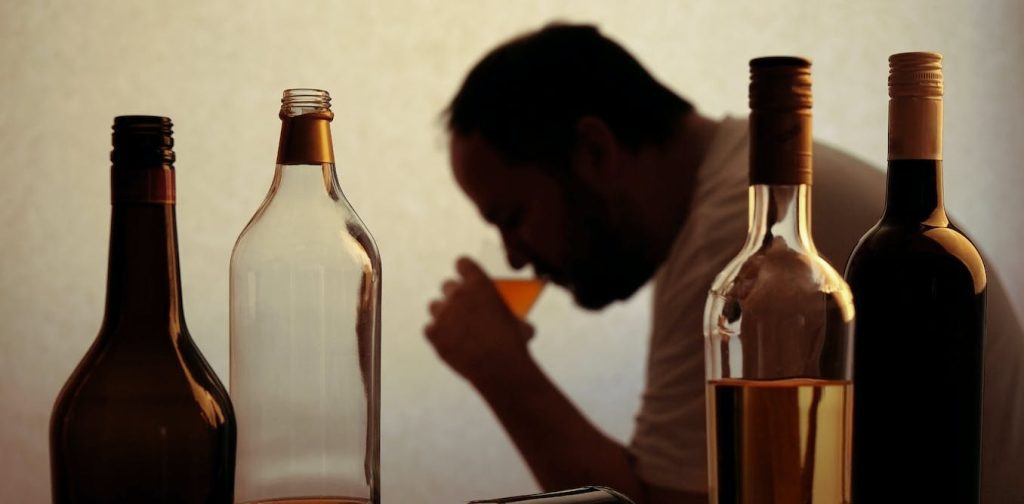Alcohol deaths in the UK rose to record level in 2021

Deaths from alcohol in the UK have risen to their highest level since records began in 2001, according to the latest data from the Office for National Statistics (ONS). In 2021, 9,641 people (14.8 per 100,000) died as a result of alcohol: a rise of 7.4% from 2020.
The leading cause of alcohol-specific deaths (deaths caused by diseases known to be a direct consequence of alcohol) continues to be liver disease. More than three-quarters (78%) of all alcohol deaths in 2021 were attributed to this cause. The remainder of the deaths were due to “mental and behavioural disorders because of the use of alcohol” and “accidental poisoning by, and exposure to, alcohol”.
Although there is no such thing as a safe level of drinking, and many people would feel the health benefits of reducing consumption, most of the risks of developing health problems and dying are skewed towards those who drink the most.
Between 2012 and 2019 alcohol-specific deaths remained relatively stable. It is no coincidence that deaths rose sharply during the first two years of the pandemic: those that were already drinking at harmful levels increased their consumption further during this period. Although liver disease can take years to develop, this process is accelerated when those drinking at harmful levels increase their consumption further.
Other statistics show that unplanned alcohol-related hospital admissions decreased during this period, which may have meant missed opportunities to provide help for those people experiencing problems with alcohol.
Looking beyond the headline figures, there are important differences in various groups within the population. Alcohol-specific deaths were not spread equally. For example, men were twice as likely to die as women. In 2021, 20.1 men per 100,000 died compared with 9.9 women.
Where you live in the UK matters, too, as deaths in Scotland are the highest, followed by Northern Ireland, Wales then and England – although the gap between the nations seems to be narrowing.
In England, deaths are highest in the north-east of England (20.4 per 100,000), which is twice as high as those in London (10.2 per 100,000). Although rates have increased in all regions; for example, there was a rise of 38% in south-west England from 2019 to 2021. This reflects what is already known about the relationship between deprivation and harm from alcohol. There is a two to fivefold higher risk of dying among lower-income groups compared with those from the higher-income groups.
Reflecting the growing trend of young people drinking less than older age groups, it is those aged 50 to 64 that account for most deaths due to liver disease. In 2021, for example, 39 people aged 25 to 29 died from alcohol-related liver disease, compared with 1,326 of those aged 50 to 59. This is related to a greater number of years of drinking but is also a general reflection that when older adults were younger, they tended to drink more than younger people do now.
Numbers of alcohol-specific deaths, by five-year age group and individual cause.
Office for National Statistics – Alcohol-specific deaths in the UK: registered in 2021, National Records of Scotland and the Northern Ireland Statistics and Research Agency
Addressing harms
So what can be done to begin to address alcohol harms? It has been estimated that almost a quarter of drinkers in the UK drink above the recommended low-risk drinking guidelines. So this is a health and social issue that requires a national response. Low-impact initiatives, such as education and awareness raising, may not be enough.
The costs of alcohol to society are significant. A recent review estimated this to be £27 billion annually, with only half of this offset by tax revenue on alcohol products.
Timely access to specialist treatment can help to reduce the health risks associated with alcohol. Unfortunately, there have been significant cuts to funding for this type of intervention.
Around 80% of people classed as dependent on alcohol in England are not currently getting treatment support. While there has recently been extra funding for drug services to try and correct historic cuts, this has not been extended to alcohol. Reversing this by investing in services could help to reduce the rising number dying prematurely from alcohol.
A new strategy is long overdue
The last government strategy for alcohol was published in 2012, so there is a pressing need for a new one. This must address all the ways that the harms from alcohol can be tackled, from marketing and pricing to specialist treatment and recovery services.
A group, led by Liverpool MP Dan Carden, with cross-party support, recently called on the government to initiate an independent review of alcohol harm, along the lines of the review led by Dame Carol Black, which had a significant influence on drug policy and treatment funding.
Without such a review and strategy based on it, the harms caused by alcohol including premature death will continue to rise year after year. So much has changed since the last alcohol strategy in 2012 not least the current cost of living crisis. The outlook for investment in public health looks bleak, added to which this government doesn’t seem willing to curtail the efforts of the alcohol industry in marketing and protecting its products.






